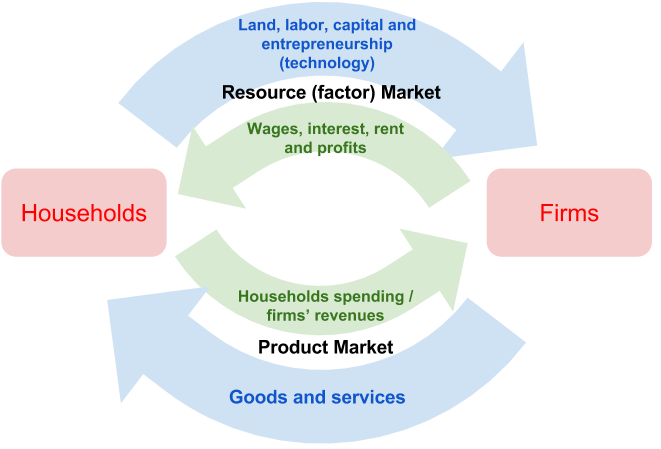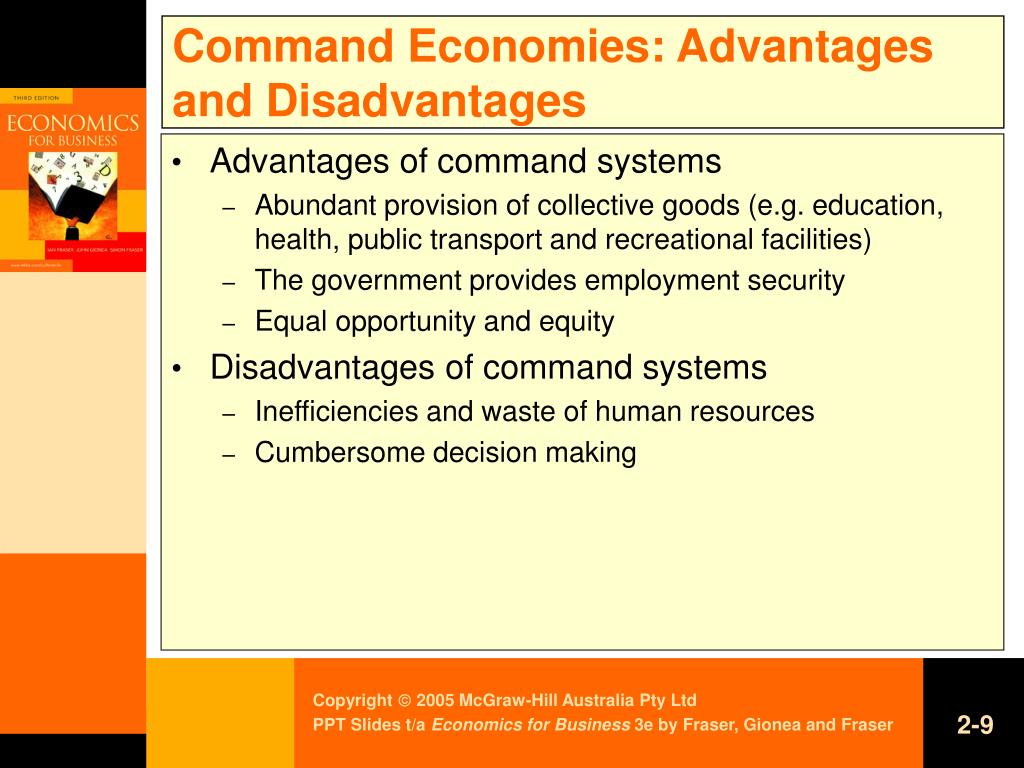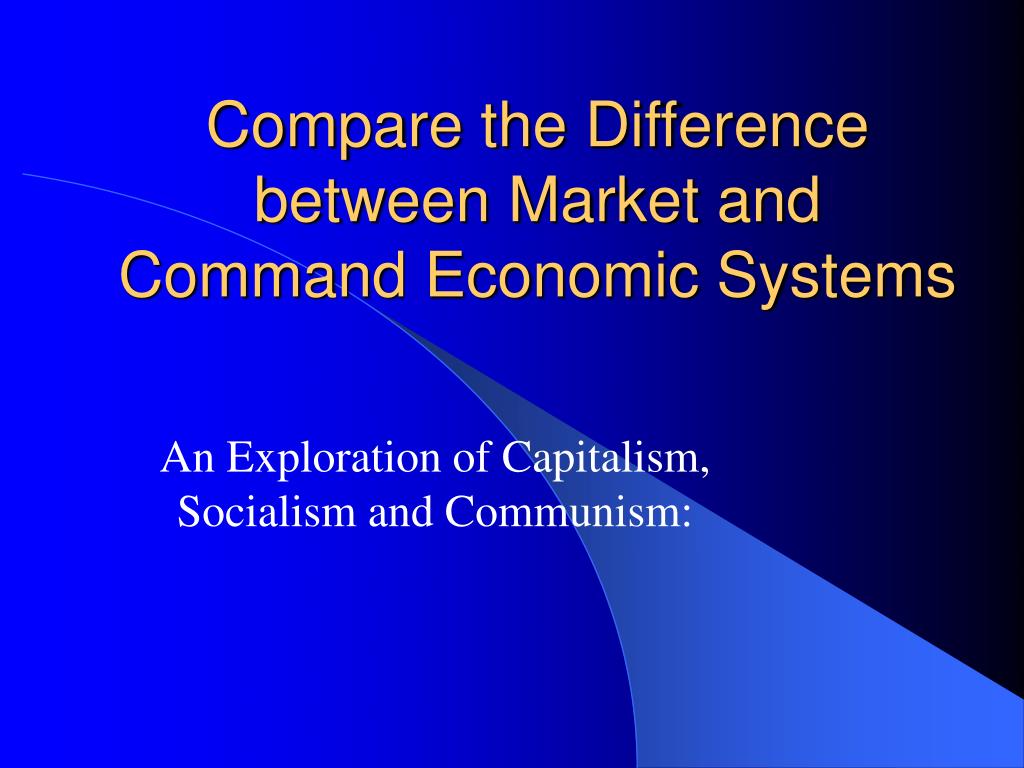A command economic system is a type of economic system in which a central authority, such as a government, makes all economic decisions and dictates the production and distribution of goods and services. This type of economic system is characterized by a lack of individual decision-making and a lack of market competition. Instead, the central authority determines what goods and services will be produced, how they will be produced, and how they will be distributed to the population.
One of the main features of a command economic system is that the government has complete control over the economy. It determines what goods and services are produced and in what quantities, as well as how they are distributed to the population. The government also determines the prices of goods and services, as well as the wages of workers. In a command economic system, there is no market competition, as the government has complete control over the supply and demand of goods and services.
There are several advantages to a command economic system. One advantage is that it allows the government to allocate resources in a way that it believes will be most beneficial to the population. For example, the government can prioritize the production of goods and services that are essential for the well-being of the population, such as healthcare and education. Another advantage is that a command economic system can help to eliminate economic inequality, as the government can ensure that resources are distributed fairly among the population.
However, there are also several disadvantages to a command economic system. One disadvantage is that it can lead to inefficiencies in the economy, as the government may not have the expertise or the information to make the best economic decisions. This can result in the production of goods and services that are not in high demand, or the allocation of resources to projects that are not cost-effective. Another disadvantage is that a command economic system can stifle innovation and entrepreneurship, as there is no incentive for individuals to take risks or develop new ideas.
In conclusion, a command economic system is a type of economic system in which a central authority, such as a government, makes all economic decisions and dictates the production and distribution of goods and services. While it has some advantages, such as the ability to allocate resources and reduce economic inequality, it also has several disadvantages, including inefficiencies and a lack of innovation and entrepreneurship.
What are two command economies?

In actuality, one of its overarching objectives is to ensure optimal social welfare. Are they the same thing? Until 1990, the Soviet Union financed Cuba's economy. Much of the research about economics focuses on the free market system, the economic system we experience in the United States. A command economy, or a planned economy, is where the big decisions are made at the centre by the government. The goal is to supply enough food, housing, and other basics to meet the needs of everyone in the country. Finally, with their incomes strictly controlled by the government, the people have no avenue for building wealth.
Command Economy Definition, Characteristics, Pros and Cons

What is Command Economy? Habit: solitary or colonial. Is there a profit motive in a planned economy? Many are colonial Eg: Corals. In addition, the government provides certain services directly to consumers, such as postal services, building and maintenance of roadways, and maintenance of a strong military. Even relatively free-market nations like Hong Kong and Australia have a mixed economy. Not only do governments get to decide how much of certain products to produce and what jobs people will work, but under a command economy, the government also ultimately decides other factors such as how much food everyone receives and what style of house they live in. The government provides other direct assistance, such as asserting tariffs on products imported from other countries, effectively limiting competition that could drive American businesses under. It is hard for the government organization in charge of the economy to gather up-to-date details concerning consumer wants, therefore rationing becomes the norm most of the time.
Command Economy: Definition & Characteristics

In such a case, the government comes in and exercises control over the resources. What are the benefits of command economy? Similarly, businesses are free to hire the best-qualified workers, rather than having workers assigned to them based on the central economic plan. It is doubtful the government would deem it important to relegate resources to production of such a luxury item. For example, the government tells workers what jobs they must fulfill, and this discourages them from moving. Governments play a minor role in the direction of economic activity through taxes and regulation. The economic activity in the command economy works on the decision of the central authority. Cnidarians contain specialized cells known as cnidocytes? Which country still has a total Command Economy? Cuba, North Korea, and the former Soviet Union are examples of countries that have command economies, while China maintained a command economy for decades before transitioning to a mixed economy that features both communistic and capitalistic elements.







